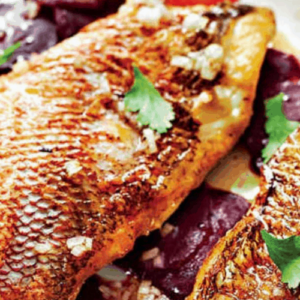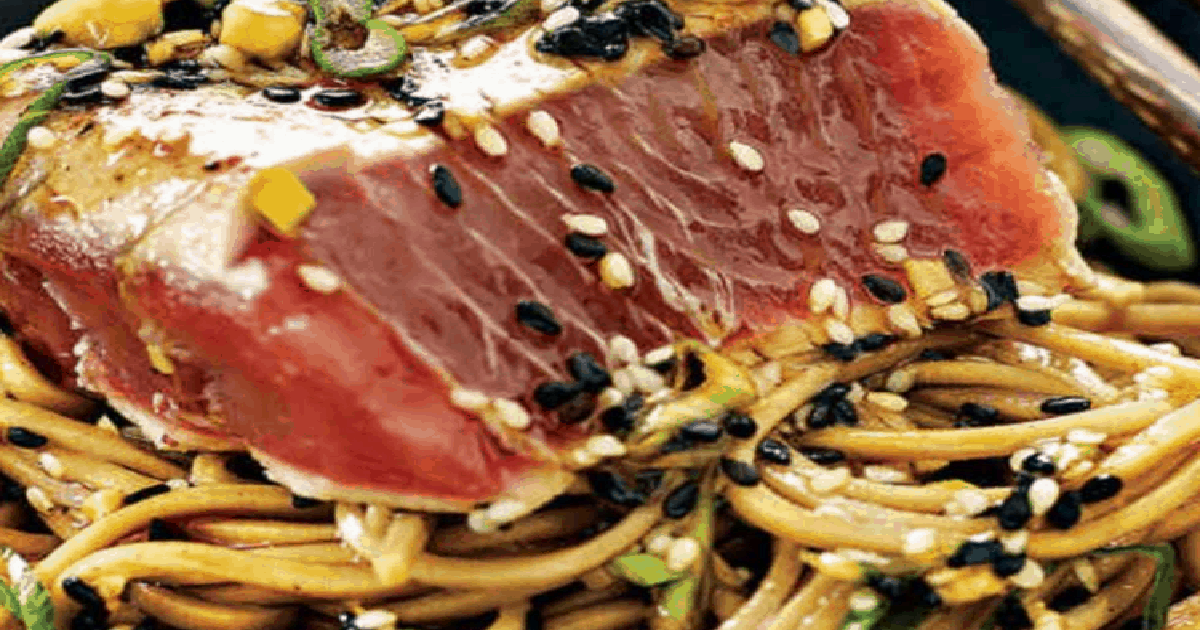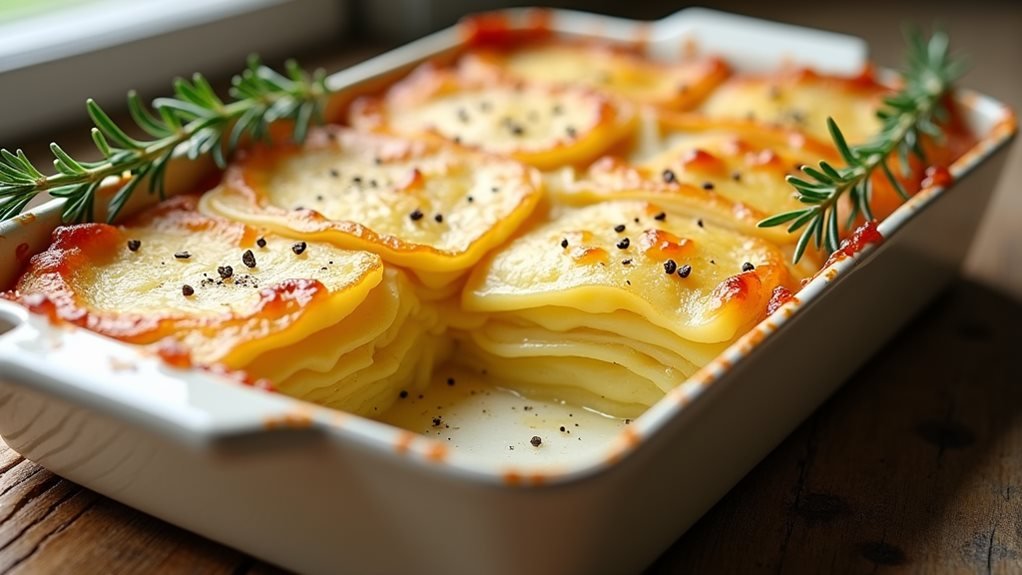Pan-fried Red Snapper is one of my favorite seafood dishes for a light and healthy dinner. I love how easy it is to make, and the crispy, golden-brown crust outside the fish is irresistible. The tender and juicy meat inside the red snapper is delicate and flavorful, making it the perfect ingredient for various seasonings and sauces. In this recipe, I’ll share my step-by-step instructions for making the perfect pan-fried Red Snapper at home.
Crab cakes reimagined: Savor the gourmet touch in Gordon Ramsay’s Guide to Gourmet Crab Cakes.

Pan Seared Red Snapper with Skin
Ingredients
Pink Grapefruit Dressing
- 1 Tbsp. freshly squeezed pink
- grapefruit juice
- 1 small minced shallot
- 1 Tsp. honey
- 1 Tsp. sherry vinegar
- ¼ C. olive oil
- salt and ground black Pepper to taste
Roasted Beets
- 2 red baby beets, wash and clean
- 2 golden baby beets, wash and clean
- Olive oil
- salt and ground black Pepper to taste
Pan-Fried Red Snapper
- 2 tablespoons olive oil
- 2 tablespoons butter
- 4 red snapper fillets, skin on, lightly scored
- Sea salt and black pepper
- 1 grapefruit, cut into segments
- 2 radishes, sliced
- 1 teaspoon chopped basil, + more for garnish
- 1 teaspoon chopped cilantro, + more for garnish
Instructions
Pink Grapefruit Dressing
- In a small bowl, combine the grapefruit juice, shallot, honey, and sherry vinegar, whisking well. Whisk in the olive oil in a slow, steady stream until emulsified.
- Season with salt and pepper
Roasted Beets
- Preheat the oven to 375°F. Peel the beets and place them on two separate pieces of tin foil. Coat them lightly with olive oil and season with salt and pepper.
- Wrap the beets in the foil and place them on a baking sheet. Roast in the oven until they are cooked through and easily pierced with the tip of a sharp knife, 45–60 minutes.
Red-Snapper
- Heat olive oil and butter in a large sauté pan over medium-high heat. When the foam subsides, season the red snapper fillets with salt and pepper and cook, skin-side down, for about 3 minutes, until they are lightly browned.
- Then turn the fillets over and sear the other side for 2 minutes until cooked.
Notes
Best Way to Eat Red Snapper
The best way to eat red snapper is largely a personal preference, as it is a versatile fish that can be prepared in numerous ways. Popular methods include grilling, baking, broiling, pan-searing, or steaming. Red snapper is known for its firm texture and mild, nutty flavor, which pairs well with various seasonings and sauces. Cooking it with the skin on can help keep the flesh moist. Many enjoy red snapper in Mediterranean dishes, seasoned with olive oil, lemon, and herbs, or in Caribbean cuisine, where it’s often served with spicy and tangy flavors.
Is Red Snapper Good for Frying?
Yes, red snapper is good for frying. Its firm texture holds up well when breaded and deep-fried or pan-fried. To fry red snapper, the fillets can be coated in seasoned flour, dipped in egg, and then covered in breadcrumbs or batter. The key is maintaining the oil at the right temperature (typically around 350°F or 175°C) to ensure the fish cooks evenly and turns golden brown without absorbing too much oil.
How is Snapper Supposed to be Cooked?
Snapper should be cooked until it reaches an internal temperature of 145°F (63°C), at which point the flesh should be opaque and flake easily with a fork. Overcooking can dry out the fish, so it’s important to monitor the cooking time closely. Whether you grill, bake, broil, fry, marinate, or season the snapper beforehand, it is often helpful to enhance its flavor.
What Do You Soak Red Snapper In?
Before cooking, red snapper can be soaked or marinated to infuse it with additional flavor and moisture. Common soaking solutions include:
- Milk or Buttermilk: Soaking fish in milk or buttermilk can help tenderize the fish and reduce any fishy odor, thanks to these liquids’ mild acidity and enzymes.
- Citrus Juice: A brief soak in lemon or lime juice can add a bright flavor and help firm up the flesh. However, be careful not to marinate for too long, as the acidity can begin to “cook” the fish, similar to ceviche.
- Olive Oil and Herbs: A marinade made with olive oil, garlic, and fresh herbs like parsley, dill, or thyme can impart a wonderful aroma and taste to the fish.
- Seasoned Brine: A brine made with water, salt, and seasonings can help season the fish throughout and keep it moist during cooking.
When marinating fish, it’s generally best to do so in the refrigerator and for a relatively short time (30 minutes to an hour) to prevent the fish from becoming too soft or mushy. Always discard any used marinade, and do not reuse it for food safety reasons.
Summing Up
As the final fillets are gently plated, the kitchen is fragrant with the heady aroma of citrus and the comforting scent of roasted vegetables. This dish is the epitome of balance, a beautiful array of pan-fried Red Snapper resting alongside a colorful medley of sweet beets dressed with a tart grapefruit emulsion. It’s a testament to how a few carefully chosen, high-quality ingredients can sing together in harmony.
The technique may be simple, but the outcome is nothing short of a culinary ballet. Every element pirouets on the palate, leaving a lingering note of satisfaction and the quiet thrill of a well-crafted meal. This dish offers a delicious dinner and an invitation to savor each bite, appreciate the interplay of textures and flavors, and celebrate the simple pleasures of cooking at home.
Redefine pasta night: Explore the richness of Gordon Ramsay’s Guide to Exquisite Lobster Spaghetti.







